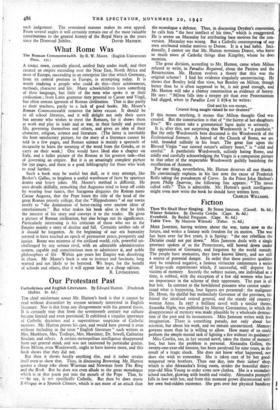The Naval Background
As the title-page indicates, 'this is a serious study, set out in such a way as to be within the capacity of the general reader. It is of great
and sober interest. The approach is admirably reticent. No harsh expressions are used of any individual save in the case of Com- mander X, and the even narrative proceeds in excellent and balanced temper. " In Sir John Jellicoe and his Flag officers and captains," writes Lord Chatfield on p. 139, " the nation also had a remarkable band of brothers, devoted to their chief, in whom they had the same implicit trust that we ourselves felt in ours. Jellicoe and Beatty were complementary to one another." This passage sets the tone for the whole volume. At the same time, accepting fully the limits within which the author works, it seems a pity that he has given us no full-length study of Lord Beatty, with whom his own career was linked so intimately. The details here given hardly go beyond those set out by Mr. Churchill in his War•Memoirs. With- out entering upon the controversiall, there is surely so much that could have been said about the character and traits of the officer who commanded the greatest fleet that the Navy has ever seen.
The account of Lord Chatfield's own reactions at Jutland are very interesting, and he brings to life in an admirably vivid way the impact of Admiral Fisher upon the fleet. He has a brief and re- vealing note upon Sir Robert Arbuthnot. He succeeds in conveying with great fidelity the atmosphere of the life in big ships in the Four Years War. The most generally interesting section of the book is that run of chapters which deal with the author's service in the Caesar," Good Hope,' Venerable," Albemarle,' and Lon- don,' and at Sheerness Gunnery School and Whale Island. The very names of the ships bring back Sir John Fisher's fleets and the Edwardian Navy. The backbone of this portion of the book is a singularly lucid account, written for the layman, of the development of naval gunnery. The role of Sir Percy Scott, both assisting and obstructing, is -set out clearly. The broad lines of the progress which led to the development of the director-sight are described. It is certainly the years from 1899 till 1910 which are brought most clearly into focus.
On the other hand,'the references to the defect in British armour- piercing shell discovered after the battle of Jutland makes less impression owing to the extremely technical nature of the subject
and the author's reticence. This last quality is very notable in the book's later chapters, and does much to deprive it of spontaneity. There is, however, an interesting account of Malta, and a careful appreciation of Maltese life. There are paragraphs on the building up of oil-fuel reserves. Lord Chatfield develops at some length his views on the role of those he terms the " materialists." A quotation Vvill illustrate his contention. "Those who have read these memoirs to this point," he writes on p. 168, " will perhaps have appreciated, as I did, where our failing lay. It lay in the fact that naval material progress had been too long dominated by the producers of its material."
The book requires more care in the proof-reading. A few slips confined to names of vessels and naval officers are mentioned here, so that they can be corrected when both this volume and its successor are reissued. Rear Admiral Cardon should read Rear Admiral Carden, Admiral de Roebeck should read Admiral de Robeck, Poonah ' should read Poona," Condel should read Condell,' Seidlitz ' should read Seydlitz.' The statement that Sir Rosslyn Wemyss succeeded Sir Henry Jackson as First Sea Lord should be amended. It is the clear and sustained interest in this book that makes it worth while to suggest these small corrections. Lord Chatfield's career, which is almost unique in its distinction, gives a value to each judgement. The restrained manner makes its own appeal. From several angles it will certainly remain one of the most valuable contributions to the general history of the Royal Navy in the years



























 Previous page
Previous page